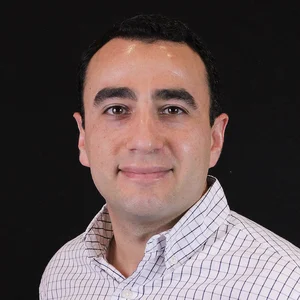
Aldevron Breakthrough Blog
Webinar: Genome Editing Tools: Beyond Discovery
November 9, 2022 / by Basam Barkho, Ph.D.
CRISPR nucleases and NanoplasmidTM working together
As one of the most significant discoveries in gene and cell therapy, CRISPR/Cas9 genome editing systems continue to evolve. In this webinar, “Genome Editing Tools: Beyond Discovery,” Aldevron experts Dr. Jim Williams and Max Sellman detail innovative tools to support gene editing clinical programs, highlighting Nanoplasmids as an HDR template paired with Cas9 nucleases in CAR-T applications.
CRISPR nuclease options
Max Sellman, Aldevron Gene Editing Product Manager, provides an overview of Aldevron’s CRISPR nucleases that are manufactured under a robust process, yielding high-quality, scalable, and stable enzymes. Aldevron’s wild-type SpCas9 and high-fidelity SpyFi Cas9TM nucleases are both available off-the-shelf at GMP grade and with Drug Master Files for IND submissions. In addition, Aldevron has added Eureca-VTM, a Type-V CRISPR nuclease to its catalog. Licensed from Inscripta, this new product is expected to be available at research grade in November 2022, followed by GMP production in 2023.
Sellman referenced some notable SpyFi Cas9 data provided by Vascugen, demonstrating robust knock out for gene editing in stem cells, with an average of 87.9% efficacy of the targeted cells. Further, in a triple knockout experiment done in collaboration with MaxCyte, both SpCas9 and SpyFi Cas9 had a high efficiency of knock-down T-cell receptors in human cells, giving the ability to work with these nucleases seamlessly within any existing clinical program.
These data also demonstrate greatly reduced off-target effects of the high fidelity SpyFi Cas9 in human T-cells. Gene editing of target reads are significantly reduced to background levels, providing a powerful method for clinical programs seeking to improve off-target effects.
Nanoplasmids working with Cas9
Nanoplasmids, a modern alternative to traditional plasmids, can be used to improve a range a gene and cell therapy programs. Dr. Jim Williams, Vice President of R&D/CSO from Nature Technology, provided details on how they can be used for CRISPR-nuclease mediated gene editing. In particular, he showed how the 500bp backbone was engineered to reduce plasmid associated innate immune activation.
Dr. Williams also discussed how different cell and gene therapies can take advantage of the platform’s properties, such as using Nanoplamids as a CRISPR HDR template for gene editing, where he offered data on the improvement of gene editing in cells utilizing Nanoplasmids compared to linear DNA.
Interestingly, Dr. Williams showed using SpyFi Cas9 with Nanoplasmid as the HDR template. The knock in rate doubled in the number of cells, according to data from Genentech. The Nanoplasmid system is designed to support a whole range of cell and gene therapy applications. When used in concert with Cas9 nucleases, Nanoplasmids can offer a notable advantage for CRISPR gene editing programs.
Q&A Session
During the Q&A, Dr. Williams and Max explained the benefit observed with Nanoplasmids includes increased expression level, higher integration, and decreased toxicity and transgene inactivation within the primary cells.
They also emphasized client support, from design and development of Nanoplasmids to providing regulatory guidance and assistance with Cas9 nuclease products, including the necessary drug master files for IND submission.
| region | na1 |
| portalId | 1769030 |
| formId | f6001eee-ee2b-4cc2-a818-e635bbf85d52 |
| target | services-hubspot-form |
